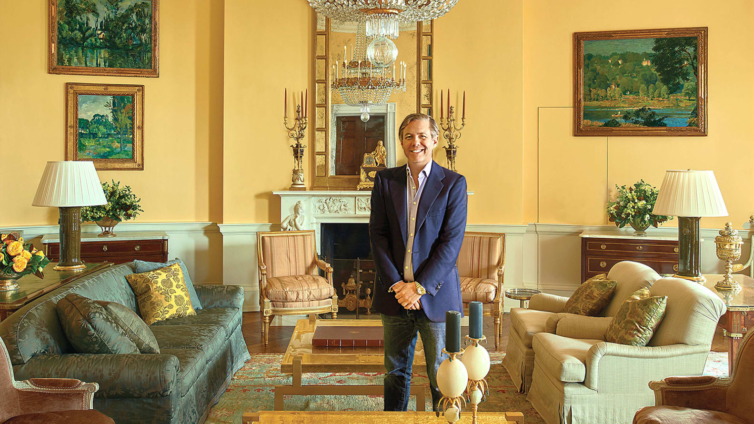There aren't many interior design jobs in which a decorator is prohibited from visiting the property before starting work. But then again, there aren't many residences like the White House.
So, when Michael S. Smith -- President Barack Obama's self-described "decorator in chief" -- arrived at 1600 Pennsylvania Avenue in Washington on Inauguration Day 2009, he knew he had to hit the ground running."
You're given all sorts of research material ... you have photos and diagrams, but you don't really know what's going on in the rooms until you show up," he recalled in a phone interview, adding: "One thing I didn't anticipate -- and most people don't, if they've never been upstairs -- is how unbelievably tall the rooms are.
"Smith renovated, redecorated and reimagined America's most famous home over the course of the next eight years. Now, in his comprehensive new book "Designing History: The Extraordinary Art & Style of the Obama White House," the interiors expert reveals how he did it, whether selecting mahogany chairs for the State Dining Room or commissioning a handmade carpet for the master bedroom.
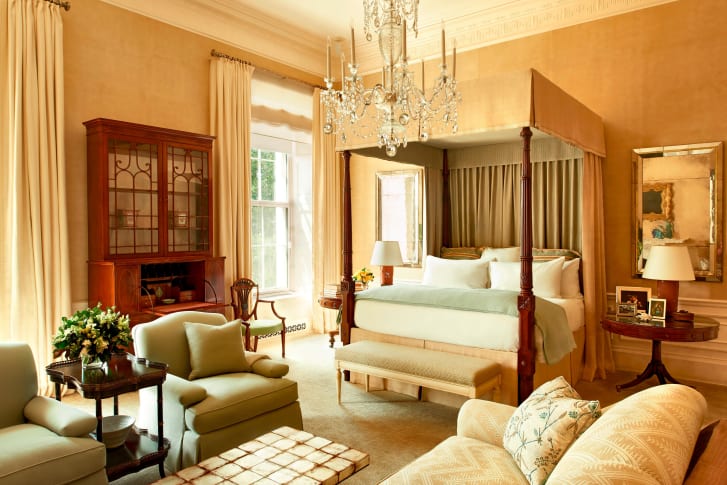
Written alongside journalist Margaret Russell, the book provides a detailed history of the White House's layout and contents. Smith and his team found reminders of past Presidents at every turn, such as the service wings constructed at Thomas Jefferson's behest, the installation of running water during Andrew Jackson's term, James Monroe's French-inspired stylings and James Buchanan's penchant for Victorian Rococo Revival furniture.
As such, the challenge was partly about reconciling the building's heritage with the progressive tastes of a first family that -- as Michelle Obama noted in the book's foreword -- included "two little girls who preferred Crate & Barrel over antique credenzas and a grandmother who bristled a bit at any whiff of pomp."
The interior designer is, however, quick to defer credit to his most famous clients.
"Being so incredibly interested in history in general, I think they were unbelievably respectful of what existed before," he said of the Obamas, adding: "They were so thoughtful and so appreciative of the fact that this wasn't their house, it was the country's house -- America's house."
Family needs
Upon his arrival, Smith's most immediate task was to redecorate the living quarters, with an emphasis on helping the Obamas' children settle in.
While the White House had, he said, been left in "extraordinarily good shape" by the Bushes, the 18th-century building was ill-equipped to meet the needs of a young family. With Sasha and Malia ages 7 and 10, respectively, when the family moved in, the Obamas' arrival marked the first time in decades that small children had lived in the residence.
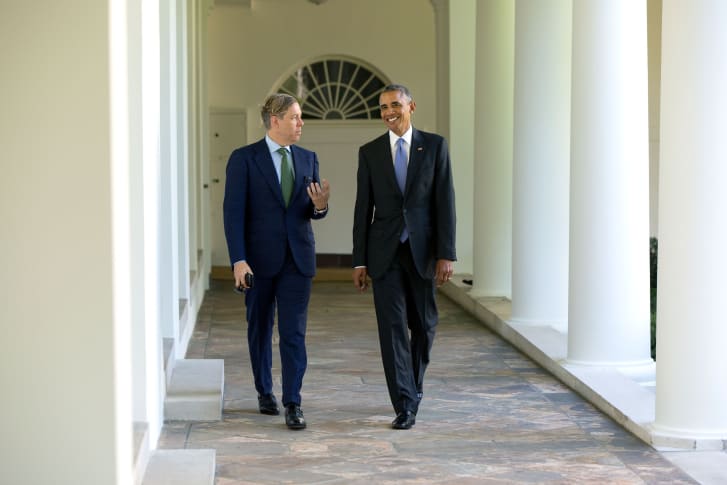
Some of the changes were relatively practical, like improved lighting that "literally made it possible for the girls to do their homework," Smith said. But transforming their bedrooms into fun, colorful and age-appropriate spaces required a more radical approach.
Here, he combined vibrant colored wallpaper and bold, oversize leaf-patterned carpets with down-to-earth decorative flourishes -- accessories from Anthropologie and playful chandeliers made of bottle caps and other found objects.
"To try to contextualize it and keep it somehow tethered to the White House was really more challenging," he added. "That was about taking furniture that was newly made, but really emulated classic American shapes."
At the other end of the spectrum lay the Oval Office, a room so iconic and historic that even the slightest alteration can attract ire -- as Smith discovered when his revamped design was described by Arianna Huffington as the "Audacity of Taupe" (a play on Obama's memoir "The Audacity of Hope") upon its unveiling in 2010.
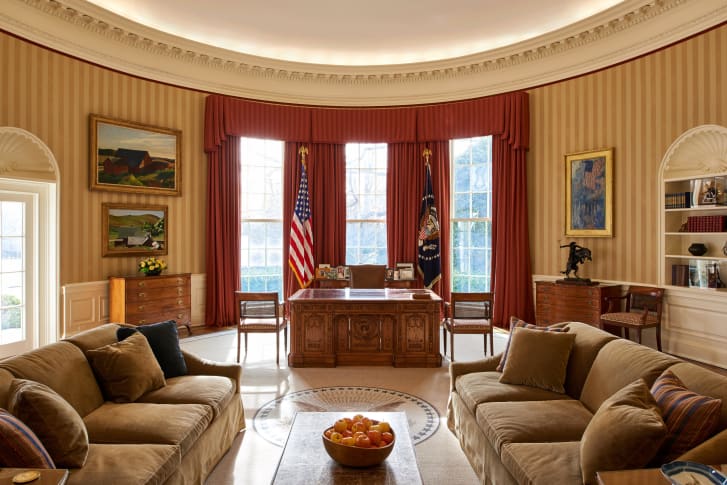
With its walnut coffee table and light brown velvet sofas, the room's neutral tones were seen by some critics as cautious, boring even. But Smith received greater plaudits for his choice of ornaments, which included Native American pottery and a rug embroidered with quotes from five celebrated Americans, including Martin Luther King Jr. and Abraham Lincoln. And he still stands by the choices he made in America's highest office.
"Someone said that Bush's (Oval Office) looked like the kind of room you'd have tea in, and that it was very genteel, but that Obama's looked like a place you'd have a quick espresso and get down to work," Smith said.
"And that pleased me to no end, because that was very much my intent."
The country was facing a very, very serious financial crisis," he added.
"I knew that (Obama) was an incredibly Socratic thinker, and would work really late into the night, so this room ... was really a working office."
Contemporary touches
One might expect the White House decorator to have access to a rich selection of old furnishings, but until the turn of the 20th century, decorative objects and items of tableware were often auctioned or sold off at the end of any given administration.
So, while there is a secretive warehouse containing a cache of usable presidential furniture, it's not, Smith said, as bountiful as some have speculated.
"There's this lore ... that it's this crazy treasure trove," he said. "But anything really wonderful is already in the building."
Though he did borrow items from the warehouse, Smith instead focused on acquiring contemporary pieces from outside, injecting a sense of modernity into the historic setting.
"My big initiative, which Mrs. Obama was very enthusiastic about and signed off, was this idea of bringing more 20th century, postwar art into the collection," he said, "because the most recent (artwork on display) when the Obamas moved in was from 1943."
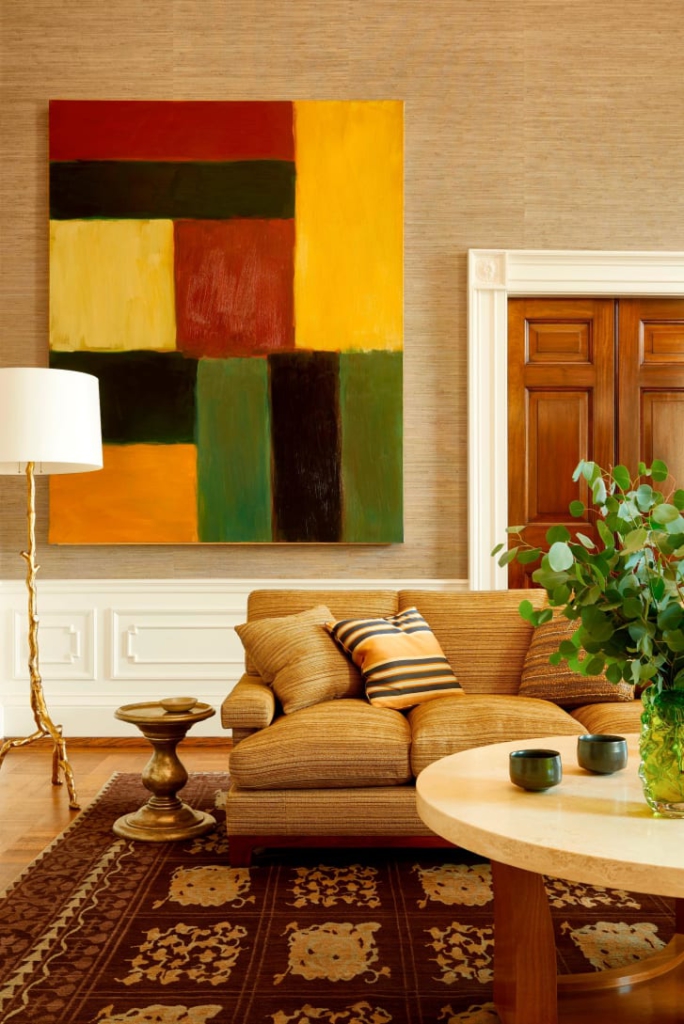
After meeting with museums and curators, Smith secured loans from across the spectrum of America's modern art tradition, incorporating the minimalism of Robert Mangold, the abstraction of Mark Rothko and a work of pop art by Ed Ruscha.
Paintings by Edward Hopper were famously displayed in the Oval Office, and as the first African American family to reside in the White House, the Obamas also expressed a preference for the work of pioneering Black artists like Jacob Lawrence, Alma Thomas and Glen Ligon, whose lithographs hung in the Billiard Room.
"The idea was to make up for lost time," Smith said. "You basically had 75 years of American art history and cultural history to bring the building up to (speed with)."
This is not to say that the house's rich collection of historic portraiture and European masterpieces were tossed aside, but -- as the former first lady wrote in her foreword -- old artworks needed to brought back to life.
"A little recessed lighting here, a dimmer there," she wrote. "And, like that, the Monet painting hanging outside my bedroom door and the Degas sculpture in our dining room became newly vibrant, newly alive."
Changing of the guard
Effusive in his praise for President Obama, Smith described his former employer as having "the precision and the focus of an architect." And while the first couple possessed plenty of opinions on interior design (Barack has "never liked decorative plates," the decorator revealed), they trusted him to execute their vision -- all while keeping one eye on the needs of future occupants.
"Everything was always met with this question of, 'How will this be for the next family?'" Smith recalled.
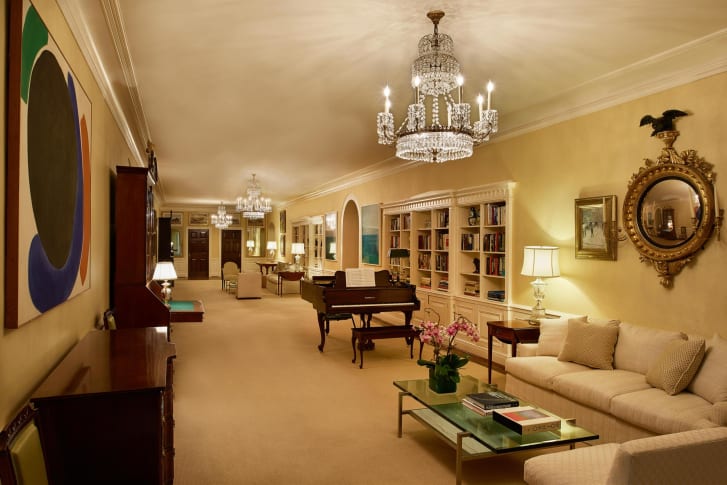
Quite what that next family -- namely the Trumps -- make of his work remains to be seen. Despite maintaining a "cordial relationship" with the White House's current decorator Tham Kannalikham, Smith admitted to knowing "very, very little" about what has taken place since the keys were handed over in 2017.
There are signs that the Trumps may have more traditional tastes than their predecessors. Architectural Record magazine in February reported seeing a draft executive order calling for all new and upgraded federal buildings to be constructed in a "classical architectural style," while a new tennis pavilion being overseen by the first lady is being built to a neoclassical design.
In any case, the artworks borrowed by the Obama administration have already been returned to the institutions they belong to. And much of the contemporary furniture (which was largely purchased out of pocket by the Obamas, and thus could be taken to their next house) now serves as "the nucleus" of the family's new Washington property, said Smith, who also helped decorate the family's post-administration home.
Regardless of what has transpired within the White House's walls, the designer seems at peace with the transience of a role in which decisions can be later overturned as easily as they were made.
"Always knowing that it is not a permanent situation makes you hyperaware of enjoying being in the space," he reflected.
And while Smith said he would be "surprised" to get a call from former Vice President and 2020 Democratic presidential nominee Joe Biden should there be a change of administration at the upcoming election, he doesn't rule out a return to the White House, if asked -- by a President of any political persuasion.
"It would depend," he said diplomatically, "on the President more than the party."
"Designing History: The Extraordinary Art & Style of the Obama White House," published by Rizzoli, is available now.
Latest Stories
-
Ghana’s legal education debate: Are we expecting too much too soon?
30 seconds -
Alcaraz storms through to semi-final with Musetti
12 minutes -
Black Queens wrap up Abidjan training tour with defeat to Côte d’Ivoire
21 minutes -
Inzaghi leaves Inter Milan ‘by mutual agreement’
25 minutes -
‘Man Utd didn’t need the money’ – Fernandes rejects Al-Hilal move
31 minutes -
Cybercrime ringleader, 10 others remanded in custody
34 minutes -
Gov’t to expand student loans to all tertiary institutions – Education Minister
35 minutes -
WaterAid Ghana, Guinness Ghana commission water project in Upper West Region
39 minutes -
Energy levy: ‘You can’t continue pouring water into a leaking bucket’ – COPEC warns
41 minutes -
Rising Star: Yvonne Dadson’s groundbreaking research earns international recognition
44 minutes -
Suicide bomber killed in Uganda on Christian holy day, army says
1 hour -
Journalists urged to champion nutrition and public health advocacy
1 hour -
Mindset Transformation Initiative marks 10 Years since June 3 Disaster, calls for national accountability
2 hours -
Ghana urged to prioritise maternal mental health amid rising postpartum depression cases
2 hours -
High Court showdown: Bright Simons demands 38-fact admissions of Ibrahim Mahama
2 hours

